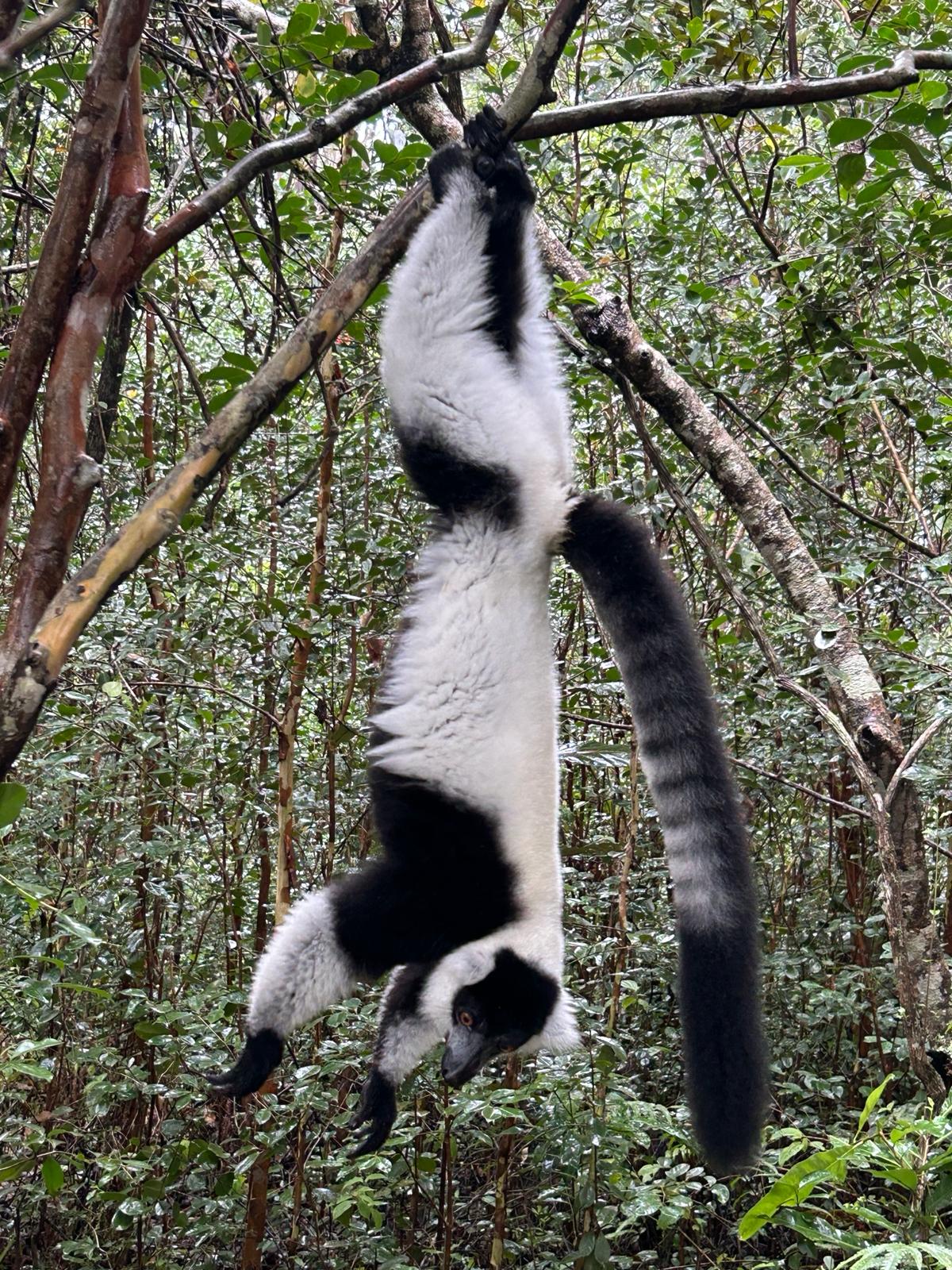It is a horrible irony that the word Lemur derives from the Latin word lemures, which means ghosts. Because this is exactly what they are soon to be.
I, like so many people, are concerned about conservation, but until I came here, to see things with my own eyes (and some concentrated reading), did I really… feel… the magnitude of extinction.
I don’t mind admitting that when I was reading the phenomenal book – Lemurs of Madagascar- I found tears rolling down my face. It states that many Lemurs will become extinct in the next two decades, and the authors go one step further to predict that there will be no lemurs by the end of the century unless, “rapid action is taken”. I state here from a person who normally has a positive stance. I have no hope.

A credible survey taken over 5 months in 2019 and 2020 showed that 53% of 659 households living in 16 villages in, or on the edge, of the Makira National Park had eaten lemur meat in the previous 12 months, and 24% Fossa meat ( top, cat like, predator). This despite the criminality of such acts. I don’t see this as the fault of the local people, who are only falling back on old survival tactics, to add a small amount of protein to what otherwise would be a rice only diet. The fault is with the Government for not improving general food security, despite millions and millions of dollars sent in aid.
Only Brazil has more primate species than Madagascar and yet Madagascar is 7% of its size and its 108 species are all endemic.
What I hadn’t realised, until my visit, was that being endemic to Madagascar was only part of the story. Certain species are also endemic to certain parks/areas of the country. The Northern Sportive Lemur, seen earlier in the trip leering down from a hole in a tree, is actually named the Ankarana Sportive Lemur and only found in the Ankarana 18 hectare reserve.
In 2021 the IUCN (International Union for Conservation of Nature) Red listed 94% of all Lemurs for extinction.
Another chilling fact that 92 countries in the world have primates. 15% of them in Madagascar. A very big responsibility for one single country to shoulder.
In the Andasibe reserve, east of the capital Tana, I went on three forest hikes with a guide, Roger: 1 night and 2 mornings. Also visiting two smaller special reserves, Vakona Forest near Andasibe, and Peyrieras Reserve near Analamanga, where Lemurs, from other areas of the country, can be seen.
In all the parks you see a magnificent array of trees, plants, flowers, fungi and reptiles, but here I just want to show the best of the lemurs.
They are truly special creatures : cute, often crazy looking, intelligent, inquisitive and when you hear the warning cry of an Indri – the biggest of the Lemurs- the sound (and it is really loud) gets to your very core. (Sounds can be heard in the video here, sorry about the pictures)
When I leave Madagascar I will miss these wonderful creatures, and every time I think of them I will shed a tear for their likely fate.

The Coquerel’s Sifaka Lemur

A Mouse Lemur

Best shot I could take of the elusive Grey Dwarf Lemur.


The Rufus Brown Lemur.



The largest Lemur, the Indri Lemur, or in Malagasy the Babakoto.



My personal favourite the Diademed Sifaka Lemur

This and main picture the Black and White Ruffed Lemur.

The Red Ruffed Lemur.
If you ever get to Madagascar, please contact the excellent guide, Roger Razafitsiresy. Email : rogerandasibe@gmail. com. Tel : 00 261 340 656686.
